Rain Water Harvesting Model of RAJUVAS
Necessity:– Bikaner has an annual rainfall of around 250 mm which falls short of requirements.
The main campus of RAJUVAS is spread over 63000 Sqm. of area. The annual rain water availability in the campus is expected to be around 95.00 lac liters. RAJUVAS was thinking of utilizing rainfall to enhance its green cover. Efforts were initiated very humbly to divert flowing water on its roads to green beds by the side of roads. After establishment of the University, plan was prepared to harvest rain water from the roofs of buildings, roads, water coming in the campus from outside and even rain water collecting around its boundaries.
Layout of rain water harvesting system:
Type 1: Harvesting rain water from buildings:– To collect rain water 5 RCC underground water tanks with total capacity of 9.5 lac liters have been constructed at different locations in the RAJUVAS campus. Out of these, 3 tanks are of 2.5 lac liters capacity each and 2 tanks with 1.0 lac liters each capacity, totaling to 9.5 lac liters. Surface and roof top rain water is collected in these tanks through pipe and chamber system. Collected water, after filtration, is stored in these tanks and over flow/surplus water is carried to the existing open dry well located within the campus and in two newly constructed soakage wells. It is expected that around 68.00 lac liters of rain water per annum shall be there for underground recharging. Simultaneously, RAJUVAS shall be able to utilize around 30 lac liters of water for drinking and other purposes. Complete system, including RCC underground tanks, chambers and pipe line system, filters and soakage wells have been constructed. The system is ready for collection of surface rain water and roof top rain water from existing buildings. The system is constructed is such a way that roof top water from any other building can also be carried to the main system. At present 5 building are connected to the main system in the first phase. Remaining buildings of the campus will be connected in second phase very shortly. The schematic diagram showing complete rain water harvesting system of RAJUVAS campus is enclosed for kind perusal.
Type 2: Harvesting of road surface rain water:– For this purpose, Toe walls along the sides of roads were built providing around a meter space between road and toe wall. This space was covered by cement blocks fixed on sand. The road as well as blocks provided ample slope to allow water to collect along the toe wall. Since, cement blocks have been fixed over sand, space between blocks (1-2 mm) allowed water to percolate into sand. Toe wail v/as punctured at appropriate places and GI pipes fitted in the hole across the toe wall. Excess water along toe walls was allowed through these pipes to the greenery bed providing sufficient water to plants and excess to be percolated in to the earth. The schematic diagram showing this type of water harvesting is enclosed for kind perusal.
Type 3: Harvesting of rain water accumulated at road junction out side boundary wall of RAJUVAS:– The boundary on the corner of hostel premises at Chaudhary Bhimsen Circle used to have around half a meter deep accumulation of rain water. This accumulated water used to disrupt the traffic at this busy square and leading to damage to NH 11. RAJUVAS thought it proper to harvest this rain water into our own land across the boundary wall. At three places, Hume pipes of 6” diameter were placed across the wall. Land near the boundary was dressed in a way that its level remains more than 1 feet lower than the road side level. This allowed water to flow into our campus and absorbed by soil. Now we have planned to develop a green belt at this point so that plants get many times more water. The schematic diagram showing this type of water harvesting is enclosed for kind perusal.
NEWS & UPDATES View All
- पी.जी.आई.वी.ई.आर., जयपुर में डॉ. बी.आर. अम्बेडकर की 134वीं जयंती पर कार्यक्रम आयोजित
- बाबा साहेब डॉ. बी.आर. अम्बेडकर की 134 वीं जयंती मनाई
- वेटरनरी विश्वविद्यालय में सातवें दीक्षांत समारोह एवं पन्द्रहवें स्थापना दिवस हेतु समीक्षा बैठक
- डेयरी महाविद्यालयों में प्रवेश जेट-2024 परीक्षा के माध्यम से
- अधिष्ठाता, डेयरी एवं खाद्य प्रौद्योगिकी महाविद्यालय, बस्सी द्वारा श्री बलराम उच्च माध्यमिक आदर्श विद्या मंदिर विद्यालय, बस्सी के शुभकामना समारोह में भाग लिया
- डेयरी एवं खाद्य प्रौद्योगिकी महाविद्यालय बस्सी जयपुर में एक दिवसीय प्याज प्रसंस्करण कार्यशाला का आयोजन
- कर्नल नितिन शेरावत, निदेशक एन.सी.सी., जयपुर ने किया एन.सी.सी. यूनिट का निरीक्षण
- ए.एच.डी.पी. द्वितीय वर्ष के विद्यार्थियों ने अधिष्ठाता, पी.जी.आई.वी.ई.आर., जयपुर किया धन्यवाद
- डेयरी एवं खाद्य प्रौद्योगिकी महाविद्यालय बस्सी, जयपुर मे मनाया गया विश्व जल दिवस
- राजुवास के डॉ. गौतम पशुपालन एवं डेयरी मंत्री के तकनीकी सलाहकार एवं नोडल अधिकारी नियुक्त
- One Day Workshop on Value Addition Technologies for Processing of Onion at CDFT Bassi, Jaipur
- समाज और पशुपालन के परिपेक्ष्य में पत्रकारिता का महत्व पर संगोष्ठी का आयोजन
- डेयरी एवं खाद्य प्रौद्योगिकी महाविद्यालय बस्सी, के छात्र छात्राये इंटर-कॉलेज खेल और सांस्कृतिक कार्यक्रम “स्पोकुल-24” में भाग लेकर पहुँचे महाविद्यालय
- प्रधानमंत्री कौशल विकास योजना के तहत क्राफ्ट बेकर के प्रशिक्षण के लिए ऑनलाइन व्याख्यान दिया ।
- खेल-सांस्कृतिक प्रतियोगिताएं “स्पोकल-24“ का हुआ भव्य समापन समारोह
- वेटरनरी विश्वविद्यालय “स्पोकल-24” द्वितीय दिन हुए विभिन्न मुकाबले
- वेटरनरी विश्वविद्यालय प्रबंध मण्डल की 34वीं बैठक सम्पन्न
- राजुवास “स्पोकल-24” का हुआ शुभारंभ नियमित स्पोर्ट्स तनाव एवं रोगों को कम करने में सहायक: कुलपति प्रो सतीश के. गर्ग
- पी.जी.आई.वी.ई.आर., जयपुर में राष्ट्रीय सेवा योजना के विशेष शिविर प्रेरक व्याख्यान का आयोजन
- डेयरी एवं खाद्य प्रौद्योगिकी महाविद्यालय बस्सी, जयपुर से इंटर-कॉलेज खेल और सांस्कृतिक कार्यक्रम “स्पोकुल-24” के लिए राजुवास बीकानेर रवाना हुए प्रतिभागी।
- Tender for CFMMP at RAJUVAS, Bikaner
- Tender for Various works of wheat and mustard at LRS Beechwal
- Tender for Agriculture Land for contract Farming at LRS Kodamdesar
- Auction notice for disposal of surplus animals at PGIVER, Jaipur
- Tender for Supply and installation of CCTV at CVAS, Bikaner
- Limited Tender for Fire Resistant Record Cabinet at CVAS Bikaner
- Limited Tender for Bowl Chopper at CVAS Bikaner
- Date Extension of Tender for Supply and Installation of CCTV System at CVAS, Bikaner
- Tender for Printing work at CVAS, Bikaner
- Tender for Security at CVAS, Bikaner
- Tender for USG Machine at CVAS, Bikaner
- Tender for Milk & Agriculture Land at LRS Bojunda Chottorgarh
- Tender for Milk at LRS Nohar
- Open Tender for supply and installation of Desktop Computers at UAO, RAJUVAS, Bikaner
- Tender for Milk at LRS Kodamdesar, Bikaner
- Tender for Inverter Split 1.5 ton Air Conditioner at CVAS, Bikaner
- Tender for Supply and Installation of CCTV Systems at CVAS, Bikaner
- Tender for Inverter Split 2 ton Air Conditioner at CVAS, Bikaner
- Tender for Supply and Installation Electrical items at CDFT, Bassi, Jaipur
- Tender for Supply and installation of Branded Desktop PC at CDFT Bassi, Jaipur
- Financial Bid opening for Flat Interactive Panel
- Rate contract for supply of fodder for Kharif crop at RAJUVAS, Bikaner
- Rate approval order of Feed supplement at CFMMP, RAJUVAS
- Rate approval order of Mineral Salts for mineral mixture at CFMMP, RAJUVAS
- Rate approved order copy for generator set at CVAS, Bikaner
- Approved rate for Generator set at CVAS, Bikaner
- Work order for Feed Ingredient at RAJUVAS, Bikaner
- Work order for Feed Ingredient at RAJUVAS, Bikaner
- Rate contract order
- Rate contract order
- Rate contract order
- Rate contract order
- Rate Approved order for General Items at CVAS, Bikaner
- Last date extension NIT UTM
- Construction of Gate and Balance work of Boundary wall
- Construction of Mineral Mixture Plan under RKVY Project at LRS, Chandan Jaisalmer
- Construction of Boundary wall and other work at Nava(Nagour)
- Work order for Human resource
- Renovation Work in Sahds for Cattle feed plant at LRS Dag, Jhalawar
- Work Order of Mash Cattle Feed Plant

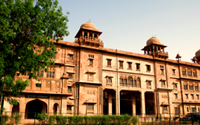
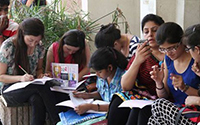

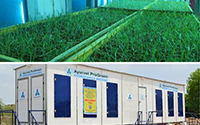
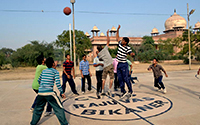

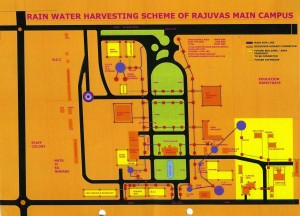




Follow Us!